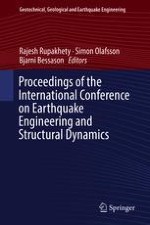This book includes a collection of chapters that were presented at the International Conference on Earthquake Engineering and Structural Dynamics (ICESD), held in Reykjavik, Iceland between 12-14 June 2017. The contributions address a wide spectrum of subjects related to wind engineering, earthquake engineering, and structural dynamics. Dynamic behavior of ultra long span bridges that are discussed in this volume represent one of the most challenging and ambitious contemporary engineering projects. Concepts, principles, and applications of earthquake engineering are presented in chapters addressing various aspects such as ground motion modelling, hazard analysis, structural analysis and identification, design and detailing of structures, risk due to non-structural components, and risk communication and mitigation. The presented chapters represent the state-of-the-art in these fields as well as the most recent developments.
